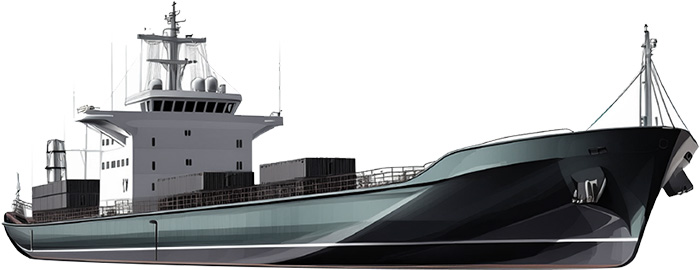Sailing as the main mode of propulsion means that maritime transport is massively less polluting.
Compared with the average for container ships making the same Le Havre – Guadeloupe route, the sailing cargo ship will drastically reduce greenhouse gas emissions per tonne transported and per kilometer travelled :
- 90 % CO2
- 98 % Sulphur oxides
- 92 % Nitrogen oxides
- 0 methane
In addition to the climate impact, using a sail instead of a motor reduces the impact on biodiversity:
- Less risk of collision
- Less noise
- Less acidification of the oceans.




